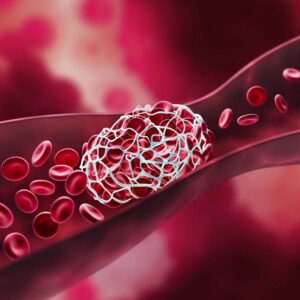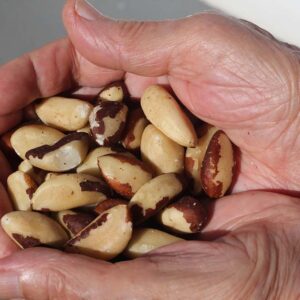
At-Home Test Predicts Your Longevity?
Dear Living Well Daily Reader,
These days it’s common to have a blood pressure cuff at home.
They’re a great way to monitor your health and can help track the effects of your supplement and exercise routines.
But another simple tool can provide even GREATER insights into your health. And most folks have never heard of them before…
They’re easy to find and typically cost LESS than most at-home blood pressure machines.
I’m talking about a dynamometer. It’s a tool that measures handgrip strength.
And incredibly, owning one is an awful lot like having a crystal ball when it comes to your health status.
Recent research reveals it can help predict life expectancy and warn you of serious health threats heading your way.
If you’re a regular Living Well Daily reader, you know I’m always urging folks to work on keeping their muscles in tip-top shape as they age.
That’s because the amount of healthy, strong muscle you carry is directly linked to your health and longevity.
Scientists and doctors can literally use measurements of lean body mass (the amount of muscle you have) to predict how long you’ll live. In fact, muscle mass is one of the BEST longevity predictors we have.
In a recent study, a group of researchers used a dynamometer to see if testing handgrip strength was a good stand-in for whole-body muscle mass. And it was.
Their research, published in the journal BMJ Open, confirmed a strong link between the strength of your grip and how long you live.
Past studies have uncovered a connection between handgrip strength and heart and lung issues. Plus, research shows poor handgrip strength is linked to a shorter lifespan.
Incredibly, this method of predicting health and longevity works not just for older people but for younger folks too!
Typically, you first spot a loss of handgrip strength when something that’s always been easy to do becomes challenging (or impossible), like opening jars or carrying groceries into the house.
Generally, a healthy handgrip strength for men is around 72.6 pounds, measured on a dynamometer. While healthy women should expect to squeeze about 44 pounds. Consult with your doctor about the best goal for yourself based on your age and health.
But while having low muscle mass can be a sign of an underlying condition, the opposite is true too. If you work to maintain and build your muscles as the years pass, it can help you stay healthier and live FAR longer.
Exercise is the key to muscle building, of course. And for the best results, that means a combination of aerobic exercise (such as walking, biking, swimming, and golf) and weightlifting.
Plus, you can support those growing muscles with nutrition. You should be sure to get enough of the following five critical nutrients to grow and maintain healthy muscles.
- Magnesium builds muscles, promotes muscle relaxation, and prevents cramping.
- Iron helps bring oxygen to your muscles. This is critical because, without enough oxygen, your muscles can’t function properly. Don’t take iron supplements if you’re postmenopausal or a man unless you have a blood test proving you’re low and your doctor has advised you to. Eat iron-rich foods instead, such as red meat, pork, poultry, seafood, dark leafy greens, and beans.
- Vitamin B12 also supports oxygen delivery to your muscles.
- Vitamin D is necessary for immune function and to strengthen your bones, of course. But this vital vitamin is ALSO crucial for muscle growth and maintenance. D helps build testosterone levels, which is critical for bone and muscle building in both men and women.
- Protein is absolutely essential for building muscles and promoting their repair.
P.S. Research published in the Journal of Applied Physiology uncovered a quick and easy way for older adults to build and maintain muscle… “activity snacks.” I’ve got all the details RIGHT HERE.
Source:
“Thresholds for clinical practice that directly link handgrip strength to remaining years of life: estimates based on longitudinal observational data” by Sergei Scherbov, Sonja Spitzer and Nadia Steiber, 22 July 2022, BMJ Open. DOI: 10.1136/bmjopen-2021-05848
Written By Dr. Scott Olson, ND
Nearly 25 years ago, failed mainstream medical treatments left Dr. Olson in constant pain – and his health in ruins. And that’s when he did something REVOLUTIONARY. He began his career in medicine – and dedicated his life to uncovering the true, underlying causes of disease.
Through his innovative medical practices in Tennessee and Colorado, Dr. Olson has helped cure countless seniors from across America of arthritis… heart disease… diabetes… and even cancer. All without risky prescription drugs or painful surgeries.
View More Free Articles
Take the SHORTER Path to Dramatically Better Health
Are you tired of fitness gurus preaching the virtues of 5 AM workouts and pushing Olympic-level training regimens? Their narrative can feel exhausting and entirely unattainable. But before you toss in the towel completely, I’ve got news that might just put a spring back into your step. A groundbreaking new study reveals that the key...
Unexpected Perks of Your Coffee Habit Revealed!
We all know that the first cup of coffee in the morning can FEEL like a lifesaver. But what if it might actually BE saving your life? A groundbreaking new study suggests that your daily coffee habit could be protecting you from not just one but multiple chronic diseases. Let’s pour over this fascinating research…...
The TRUTH About Diabetes Drugs and Brain Aging
You’ve probably seen the gushing headlines… Most say something like, “Common diabetes drug protects the brain against aging!” And let’s face it, that sounds fantastic. After all, who doesn’t want to keep their brain young and in tip-top shape? The headlines refer to the results of a new study that suggests the widely prescribed type...
Hidden Smartphone Danger Puts You at Risk
Remember when we thought cell phones were just something for young folks to obsess over? Back when we were convinced they were nothing more than a passing fad? Well, times certainly have changed. Now, most people… including many of us older folks… have jumped on the smartphone bandwagon. Heck, some of us are practically as...
Preserve Your Mobility with “Agile Aging” Exercises
Aging has a way of humbling us. You lose hair where you want to keep it—and often end up growing it where you don’t. With every passing year, your eyesight fades, and your waistline expands. And as your once quick pace begins to slow, you fear developing the dreaded “senior shuffle.” But here’s the thing....
Yes, Lazy Saturday Lie-Ins Can BOOST Your Health
Are you burning the midnight oil during the week and catching up on sleep on weekends? Well, I’ve got some news that might help you feel less guilty about those lazy Saturday mornings. A new study suggests that weekend lie-ins might be doing far more than just helping you feel refreshed. Experts say they could...
Mailbag: 7 Hidden Culprits Behind Your Weight Gain
“Why am I gaining weight, even though I am watching what I am eating?” – Battling the Bulge Dear Battling, Gaining weight when you’re not trying to is frustrating. And it just gets worse as we age… often regardless of our diet. The truth is that various factors can promote weight gain even when you’re...
Popular Artificial Sweetener Linked to Dangerous Heart Risk
Remember when erythritol was the darling of the health food world? Well, this popular sugar substitute might not be as sweet a deal as we were led to believe… A shocking new study reveals a dark side to this widely used artificial sweetener. It turns out erythritol is associated with a dangerous—and even deadly—heart risk....
Cracking the Code on Chronic Inflammation
Inflammation and obesity are the evil tag team at the heart of nearly every major disease we face—from diabetes to obesity. What starts as a normal, healthy process to fend off dangerous invaders can quickly fan into the flames of chronic inflammation… and that includes in your gut. The trouble is almost no one has...
Dreaming of Better Sleep? Your Gut Holds the Key
Do you toss and turn at night? If so, you’re not alone. In fact, if you’re a senior over 65, you join nearly 17 percent of your peers who ALSO struggle with poor sleep quality. But science has uncovered a natural supplement that not only could help you catch more Z’s but can also give...









